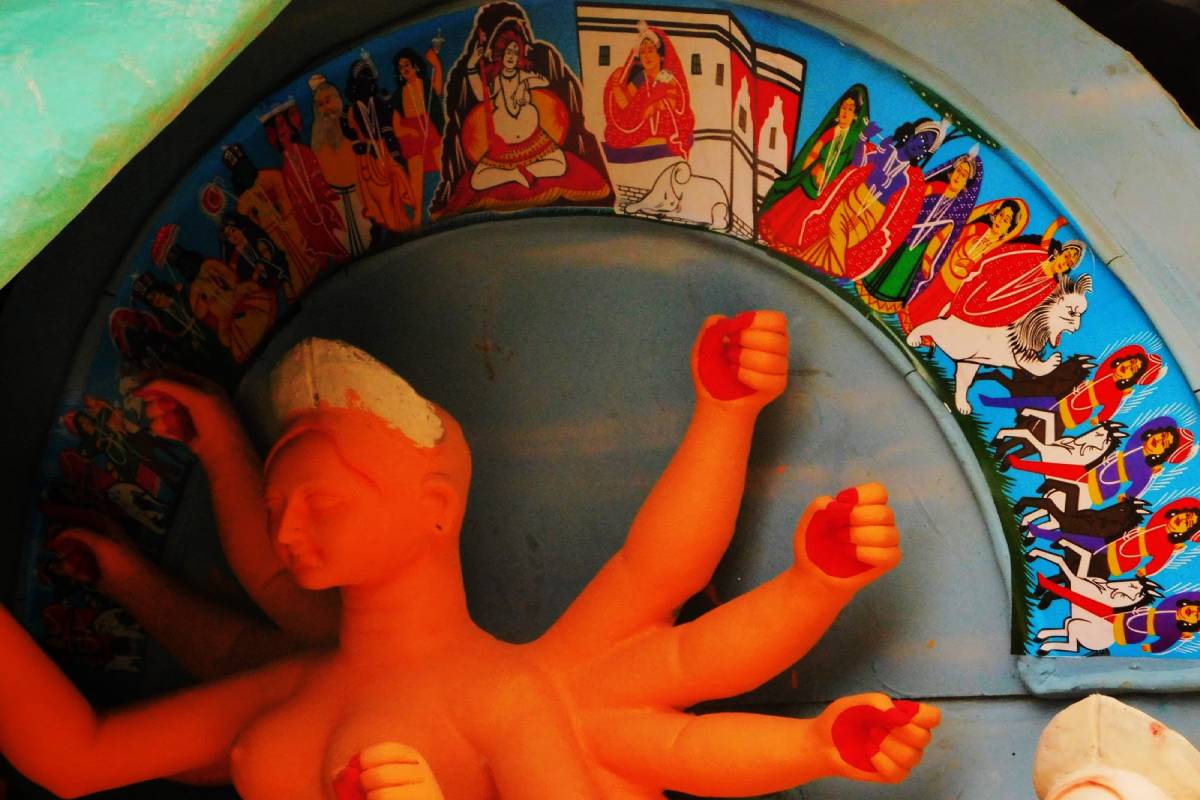RKM spent `1,292 crore on social welfare in 2023-24
The Ramakrishna Mission spent Rs 1,292 crore on social welfare, education, and rural development in 2023-24. The 115th annual general meeting of RKM was held at the Belur Math recently.
When something new comes, something old fades away. Such a tradition is the Chalchitro (traditional paintings, a folk art form).

Chalchitro, the fading tradition of Bengal
It is saddening to see the traditional fervor of Durga Puja is fading away, slowly and gradually. Be it the pandals, the idol or the rituals, everything is changing, drastically. Undoubtedly the Puja is attaining more grandeur in terms of scale of organizing. But when something new comes, something old fades away. Such a tradition is the Chalchitro (traditional paintings, a folk art form) behind the Durga idol.
Apart from beautifying the idol, the use of Chalchitro was done to give a symmetrical balance to the entire structure. Earlier, the art-form was widely celebrated and very commonly seen behind almost every Durga idol. Today, it can rarely be seen in the sarvajanin pujo (puja of the commoners). But the tradition is still followed by the Raj-barir pujo (puja of the royal families) and the age-old household pujas (barir pujo).
Advertisement
Behind the Durga idol, the paintings are made in a semi-circular arch. The semi-circle is made using bamboo, which is then covered by thick cloth. The cloth is clayed and dried up. Then it is covered by a layer of white colour, over which the paintings are made. A characteristic feature of the Chalchitro is that only natural colours are used for the paintings.
Advertisement
Chalchitro is generally made by the Patua (the artist community that belongs both from Hindu and Muslim religions). It is also famous by the name, Patachitro. They depict various stories, which include stories from the Hindu mythology. The decoration also depicts the glory of Hindu Gods and Goddesses. Although different Chalchitro tells different stories, one common thing in every Chalchitro is the image of Lord Shiva.
The idols of Devi Durga, Devi Laxmi, Devi Saraswati, Lord Ganesh, and Lord Kartik along with Lord Shiva‘s image on the top, shows the warmth and love of being together as a family. In the modern world, where the nuclear family is in trend, this age-old tradition still speaks of the importance of joint family.
Advertisement